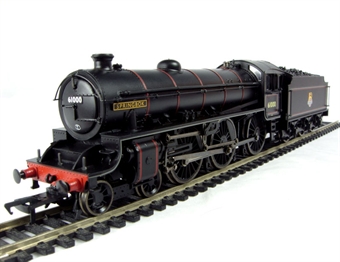Bachmann Branchline 31-712 Class B1 61000 'Springbok' BR lined black early emblem
Product Details
OO Gauge (1:76 Scale)
Class B1 61000 'Springbok' BR lined black early emblem
DCC incompatible. Split Chassis
Product Description
Shed code: 30 A Thompsons first, and most successful locomotive design, the B1 4-6-0, was a simple, rugged, all-purpose machine, whose relatively low axle weight gave it a route availability wider than most Gresely engines of comparative power. The first engine, No. 8301 'Springbok', was completed on December 13th 1943, 6 days prior to entering traffic. Thompson's dislike of his erstwhile superiors long-established three cylinder practice, worked to his advantage under wartime austerity. Through their unsophisticated two-cylinder system of propulsion, and use of available materials with lower erecting expenses, the B1, that supplanted the V4, was precisely the right type of locomotve for the conditions prevailingduring and after the war. Under BR ownership, production was perpetuated since the 4-6-0's coincided with the stipulated policy of simplicity in building and service. Externally, more square-rigged than the proceeding Gresely products, the B1 was provided with modified B17 class boilers and cylinders. Allied to these were Thompson's individual pattern of bogie and LNER standard tenders. No fewer than 410 engines filled the class at termination of construction in 1952, in favour of BR Standard equivelants. The North British Locomotive Company completed a major proportion of the total for both the LNER and BR. The first forty B1's were named afterspecies of antelope - hence the occasionally quoted 'Antelope' class. The succeeding 18 were named after directors of the LNER - but the majority never bore individual identities. The B1's were dispersed throughout the LNER network, and subsequent relevant BR regions, displacing a considerable range of elderly pre-1923 machines. One B1 was scrapped following a collision at chelmsford in 1950, the cutting torch was wielded in general between 1962 and 1967.






